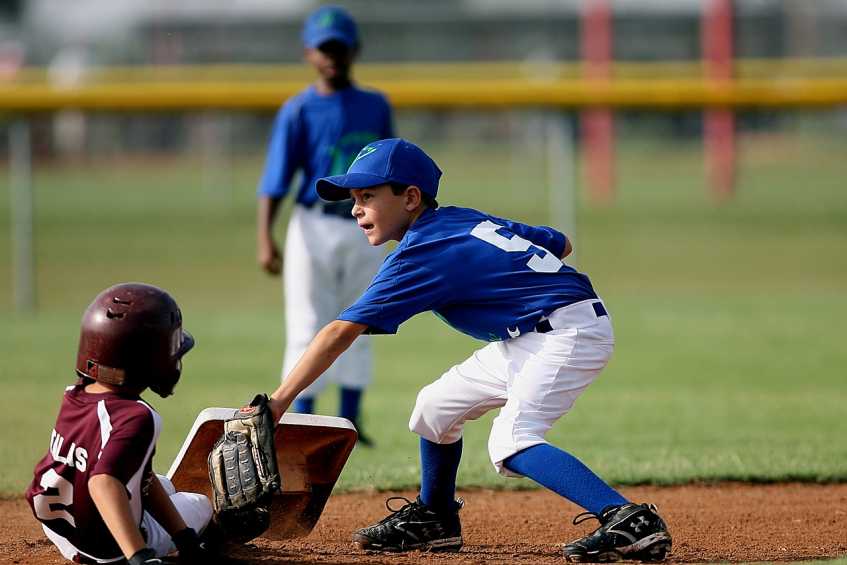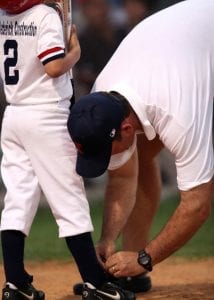
OK you may be a little disappointed by the author here, but the truth is in the statistics. Go see for yourself, here's the proof, with pictures, too.
With the current state of Major League Baseball, the technique for stealing a base has become less of a thing. The analytic gurus have "stolen" the value of it. but I take pride in my attempt to steal them and hope for the day when it is recognized as a key contributor to team wins again.
The chart below is one of those things that make you, or at least me, say WTF. Directly from Baseballreference.com is the list of all-time stolen base percentage leaders. Yes, right behind two future hall of fame players, Chase Utley and Carlos Beltran sits yours truly at number 4. I'm sure Alexi Casilla must be super proud to be above them. And who the heck is that guy sitting in our dust at number 9? He better pick it up or the distance between me and maybe the greatest player who ever lived is attempting to steal something he will have to live with forever.

Rank Player (yrs, age) SB% Bats
Alexi Casilla (9)87.912B
Chase Utley (16)87.500L
Carlos Beltran (20)86.427B
Jack Perconte (7)85.714L
Jayson Werth (15)85.161R
Kazuo Matsui (7)85.000B
Eric Byrnes (11)84.868R
Jason Bay (11)84.821R
Mike Trout (8, 26)84.753R
Nate McLouth (10)84.713
I'm pretty sure if you ran a poll of the guys on this list most people would say WhoDat? about the guy at number 4. Ha. I still shake my head looking at this list which I do almost daily, just kidding.
One thing I tell my baseball students is, "Of all the things I teach you, you should trust what I tell you about stealing bases." I am somewhat joking, as I want them to pay attention always and to everything, but here is why I say that. The only thing I was a little above average at in the major leagues was stealing bases, and it was the only area of the game that I had confidence. 78 stolen bases is not a very high total, as other parts of my game kept me from a longer and more productive major league career. I had a stretch of 22 straight stolen bases at one point, followed by 7 more in a row, but got picked off at third base between the two streaks. A pick off is considered a caught stealing according to the rules. Dang!
It is worth noting that I was usually on my own as a base stealer with the decision to steal, and on which pitch, up to me. When learning how to steal a base, that makes it much easier to be safe, than when the coach gives the steal sign on a specific pitch. When on their own, runners can hold up after a step or two when they feel they did not get the necessary jump, whereas, one must go when the coach gives the sign. Additionally, a player can pick the pitch they want to steal on with off-speed pitches the desired goal to go on.

Developing stealing instincts, as with all baseball instincts, is not easy, nor easy to describe, and it's tough to coach. Baseball instincts are the condition of doing the right thing when the correct move is not apparent. The right moves happen for those with the "Right Stuff" more often than not. Some players seem to have them, some develop them, and others never figure them out, even those who are the most talented.
Having good speed is necessary but only one aspect of how to steal a stolen base. Many players, even speedy ones, never figure out how to steal bases and usually because of one thing too much fear of getting picked off base. Good base stealers fear being picked off, but trust their athleticism and those mysterious instincts, to override the negative thought of the pick off. Following are my techniques for stealing bases.
When you're first starting to learn how to steal a base, being observant while sitting on the bench is necessary. For instance, does the pitcher have a long or short arm action, a high or low leg lift, a fast or slow motion to home and to first? When pitchers have a long arm swing, a high leg lift, or a slow body home, base runners have an immediate advantage. Of course, checking out the catchers' throwing abilities never hurts, although most steals occur on the pitcher at the higher levels of baseball. Keeping an eye out for when catchers are in throwing slumps can help, as those come and go for them, too.
At the higher levels of baseball, (double A, triple A or the Majors) first base coaches help base stealers by giving them the time of the pitcher's delivery. This time is from the moment the pitcher lifts their leg to throw to the time the ball hits the catcher's glove. Learning how to time this gives runners a great clue as to whether a steal attempt is a good idea. Of course, pitchers with very quick deliveries home are much more difficult to steal on. Good base stealers get to a point where they can watch a pitcher and know if they are slow or quick to home. Even with slow delivery pitchers, good jumps and proper running technique is usually necessary to steal on good catchers.
The length of my lead off was identical on every pitch and every pitcher. This lead off puts players the distance from first base that is a good, but comfortable lead. My lead was three and a half steps from first base, making getting back to first with either quick steps or a dive back to the bag possible, no matter how fast the pick off throw is. Some may dispute this same distance lead off on all pitchers, feeling as though players should get more or less depending on the pitchers move to first, but I believe continuity is essential for consistent steals. Of course, everyone takes different length steps, so players must experiment and practice, so they are getting the same, functional lead, consistently. Additionally, too big a lead off means runners must dive back to first, and that predictability makes it easy for 1st basemen to block the bag with their body, knowing the runner will dive back to the bag.
The perfect athletic stance is vital to be able to break either way, on a moment's notice, allowing one's instincts to work. The body must be in an incredibly balanced and relaxed position, with the feet the optimum distance apart and the hands centered equally in front of the body, as the weight is on the balls of the feet and with a very slight sway in the feet.

Stolen Base instincts - A consistent lead sets up the next thought process to be successful and is the area that great base running instincts come into play. Allow me to go into a first-person mode here to describe my mindset when about to steal a base: "My only thought is of having the quickest, most explosive first step towards second base on the first movement of the pitcher towards home plate, with absolutely no fear of getting back to first. I am fully anticipating the pitcher to make his motion towards home plate, but, but somehow, I am mentally and physically confident that with the opposite move towards first, I will get back safely."
This idea may seem complicated but is the whole key for stealing a base. As mentioned, instincts are hard to transfer in words and actions, but even though the base runner is wholly set on only breaking to the right towards second base, the mind and body can still react correctly if the pitcher's move is to first instead. "Absolutely trusting" one's athletic quickness to get back to the base runner attempts first, when the scenario is not what they are expecting, requires excellent mental acuity, confidence, and quickness. Convincing players that they can think one way, and still react the other way, is the toughest thing of coaching base stealing.
My focus was on the whole body with one eye on the front shoulder and one eye on the front knee, it that makes sense. Once again, any indication the pitcher was going home was what I was looking for - maybe a body lean, a closing of the front shoulder, a lift of the lead knee?
Explosive crossover once the move to home begins, a transfer of the weight to the right foot occurs, without any jab step with the right foot. Getting to top running speed as quickly as possible is crucial and is why the best athletes have the best chance at success, they achieve top speed quickly.
Scared of the Boogeyman - the next item to great base stealing is mental, as well as physical. Run as if a monster is chasing you scared to death of being caught no lie. One runs as fast as they can when thinking someone evil is chasing them.
Late slide - the final key to successful stolen base is the ability to slide as late as possible, so little speed is lost from the friction of the ground. High concentration is necessary to slide at the exact correct distance from second base - fast, late, and directly into the bag. The pop-up slide seems to be rarely used now for base stealing, but I believe it should be.

Hitting class now open - don't let your child swing and miss again!
I found the pop-up slide most useful for this late action for these reasons:
Players can slide late and fast without going off the bag at the end of the slide, as many do nowadays.
There is less chance of injury from the body going over the bag.
Less chance the fielder will try to block the bag with their body by going in feet first and with the body coming up at the end of the slide.
The umpire may assume the runner is on the bag as their body rises, when they may not be quite there yet. Of course, with the modern-day replay, this is not important as there is little fooling the video replay decision.
When any one of the above base stealing ingredients is even slightly mistimed, chances of being safe are lost with a decent throw from the catcher. Of course, many other factors come into play to be a successful base stealer.
A high likelihood that an off-speed pitch gives runners a significant Catchers have to wait a fraction of a second longer before throwing.
Reading a pitcher's move, especially left-handed pitchers, takes knowing what to look for. That is the area where experience and study is most necessary and another reason some speedy players do not figure out base stealing, a lack of education. Many pitchers fall into a rhythm that can be timed, or they have a "tell" some movement that tips off their throwing intention, as a body lean or open shoulder. Timing the rhythm or guessing correctly on pitchers with very quick moves home is the only way to have success on them.
Whether a lefty or right hand batter is up certainly makes a difference in successful stolen bases, as a lefty batter blocks the catcher's view and the catcher must throw around them slightly.
Field conditions a wet field makes stealing difficult and often unreasonable.
How one's legs feel that day some days, a player's legs feel slower than other days.
Many common pitfalls beset base stealers, with the biggest, of course, already mentioned, the fear of the pick-off. As said, a slightly shorter than maximum lead is much better than maximum distance, which jeopardizes the success rate the jump by putting too much worry into getting back to first on the pickoff throw.
When perfect balance position is lacking with the lead, the first step is slower or incorrect.
Too still a body with no slight sway makes the jump slower.
Staying down long after the crossover fastest running speed comes from running upright.
Sliding too early or not having full leg extension on the lead leg another reason I promote the pop-up slide
As you can see, many factors go into stealing a base and is why there are few great base stealers in the game. The long-ago innovators of baseball knew what they were doing by making the bases 90 feet apart.
Finally, an analysis of the game situation is necessary. Sometimes, it is best to let the batter hit without attempting any stolen bases. That decision sometimes changes with the count on the hitter, but good base stealers recognize game situations that make the double steal or attempt worth it. Of course, in the current home run rage era, players do not have to think of that as much about baseball stealing rules.
A double steal in baseball occurs when both runners on base attempt to steal the next base simultaneously, often second and third. This play can be strategically used to generate offense or put pressure on the defense, but success depends on factors such as runner speed, catcher arm strength, and the game situation. A successful double steal puts both runners in scoring position, but any mistake in execution can result in an out.
A stolen base occurs as a runner moves from a base that he does not have to. It generally happens when one player throws a pitch and may be spotted while pitchers have the ball or attempt pick-offs or when the catcher threw the ball to pitchers.
A stolen base happens when a baserunner tries to advance the bases without hitting a ball. The baserunner usually starts to attempt after a pitcher pitches. The baserunner is on full sprints when the ball is out of his hands.
Because it's on the ground, a batter can get into the game when he's on base. It can occur on a wild pitch / pass ball / catcher whose ball has been thrown or is not properly caught.
A runner isn't allowed to steal a base when there is a dead ball or foul ball. A third advantage of having an unoccupied hitter can be achieved by hitting the baserunner when the pitcher is at the plate.
Definitions. A stolen base occurs when someone moves into a position where he is not entitled and then steals a base.
Those that do not throw will be scored either as stolen bases or defensive indifference(DI).
In baseball, players may take two bases in the same game and may also take one. There are several bases running maneuvers that allow a baserunner or runners in an effort to reach home plate no matter where it'll land. This scenario has the purpose of keeping runners away by protecting runners when they are stealing bases.
Definitions. Catching stealing happens if a runner attempted to steal, and was left behind by a runner who reached third and home plate. After a pitch, the ball goes into a fielder before reaching a baserunner.
You may steal bases at any time with the exception of deadballs or foul ball. Generally, however, stealers steal bases at pitching times.
The Major League Baseball All-Time Stolen Base Leader is Rickey Henderson, who stole 1,406 bases during his career. Henderson played for multiple teams during his career, including the Oakland Athletics, New York Yankees, and San Diego Padres, among others. He is widely considered one of the greatest leadoff hitters and baserunners in baseball history.
After playing major league baseball, Jack Perconte has taught baseball and softball since 1988 and offered valuable coaching training too. He has helped numerous youth players reach their potential, as well as having helped parents and coaches navigate their way through the challenging world of youth sports. Jack is one of the leading authorities in the areas of youth baseball training and coaching training advice.
All Jack Perconte articles are used with copyright permission.There are 0 comments on "How to Steal a Base by One of the All-Time Best"
chandler allen says:
"Hi my name is chandler, i’ve enjoyed..."
On Wanting to tryout for summer ball. as an 18 year old
david graham says:
"With no current MLB team in Canada,..."
On With no current MLB team in
Charles Chavez says:
"To All Coaches: Do you have13U or..."
On Looking for Games